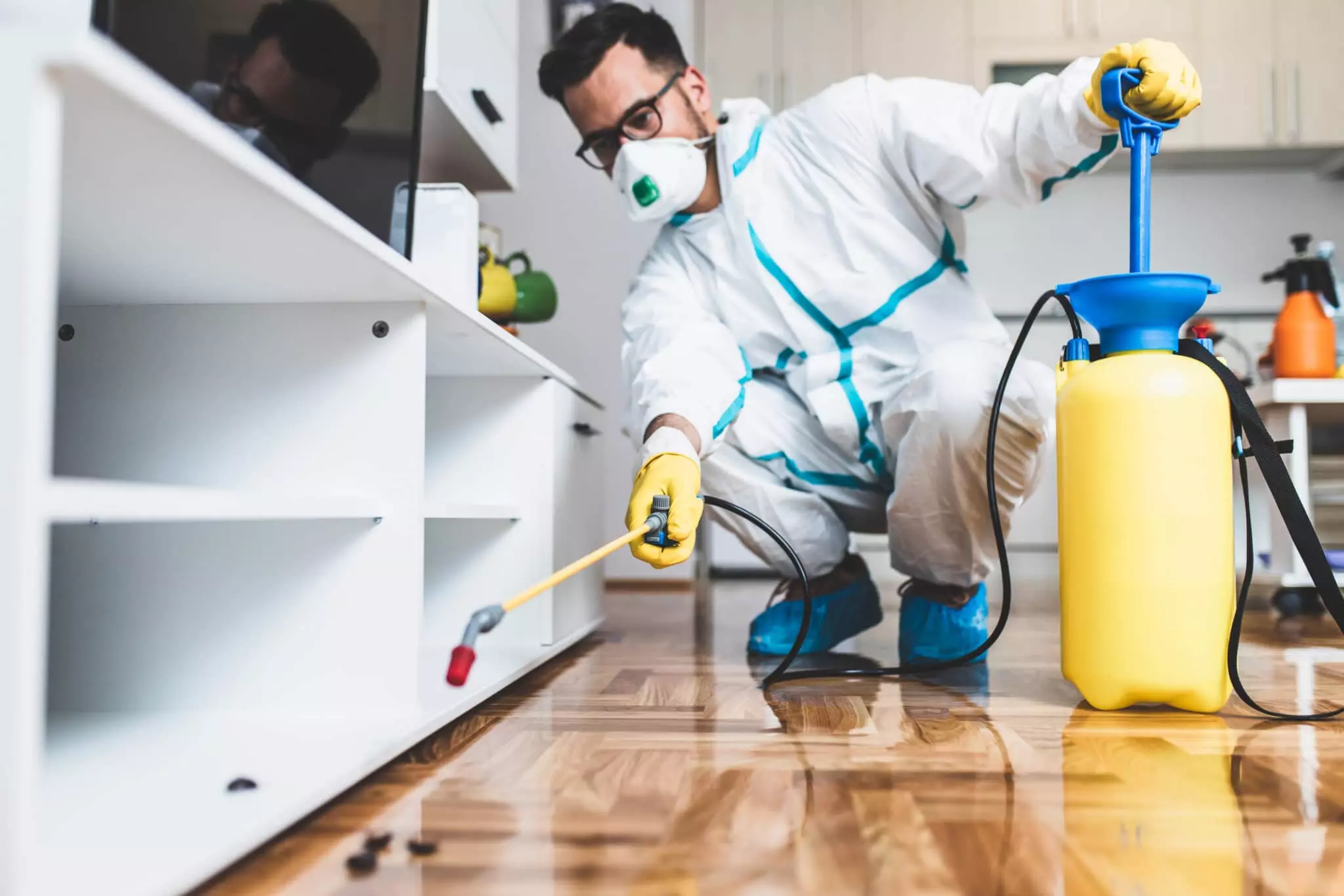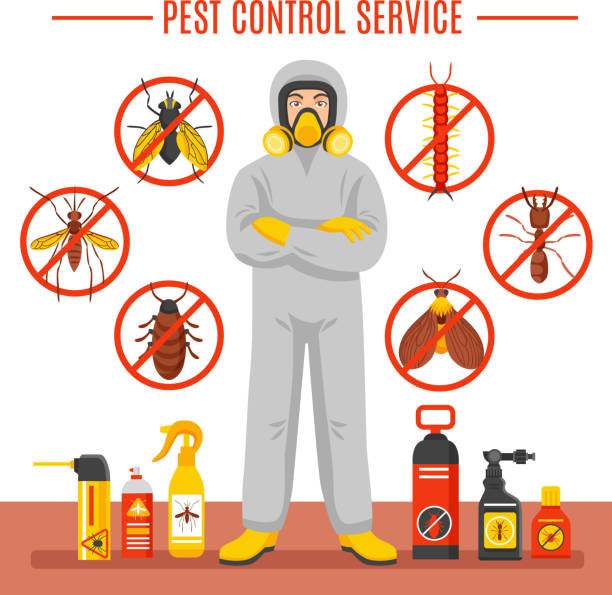Pest Control solutions for both commercial properties.
Pest Control solutions for both commercial properties.
Blog Article
Eco-Friendly Insect Control Approaches for Taking Care Of Wild Animals in Urban Areas
Urban locations typically discover themselves at the crossway of human activity and wild animals, bring about distinct challenges in parasite management. Environmentally friendly strategies stress sustainable conjunction, using strategies such as environment adjustment and all-natural repellents to alleviate human-wildlife problems. These strategies not just shield the setting but likewise improve community involvement in wild animals management. As city populations proceed to grow, understanding the characteristics of wildlife interactions comes to be significantly crucial. What innovative techniques can be applied to guarantee both ecological equilibrium and urban safety? Exploring this inquiry reveals a compelling landscape of potential services.
Comprehending Urban Wild Animals Dynamics
Comprehending Urban Wildlife Dynamics is necessary for establishing effective and environment-friendly insect control approaches. Urban locations are significantly coming to be habitats for various wild animals varieties, driven by aspects such as habitat fragmentation, food schedule, and human encroachment. Identifying these characteristics allows for a nuanced technique to pest monitoring that aligns with ecological principles.
Urban wild animals usually includes species such as raccoons, squirrels, and birds, which adapt to city settings, locating niches in environment-friendly rooms, parks, and also suburbs. Their visibility can bring about problems with people, particularly when they manipulate personnels for food and sanctuary. Recognizing the habits and eco-friendly functions of these types notifies strategies that decrease adverse interactions while advertising biodiversity.
Moreover, acknowledging the interdependencies within urban environments aids in recognizing critical locations for habitat preservation and reconstruction. This expertise adds to the growth of incorporated parasite management (IPM) strategies that consider the environmental balance, thereby minimizing dependence on hazardous chemicals. By cultivating conjunction between human beings and city wildlife, cities can produce healthier atmospheres that profit both residents and neighborhood ecosystems, paving the means for sustainable metropolitan living.
All-natural Repellents and Deterrents
Natural repellents and deterrents use a lasting option to standard bug control methods by taking advantage of the power of nature to maintain unwanted types at bay. These eco-friendly services typically make use of plant-based ingredients, essential oils, and other naturally happening materials that discourage parasites without harming the setting.
One reliable natural repellent is peppermint oil, which is understood to ward off rats and insects. Its strong aroma is unpleasant to several pests, making it a popular selection for urban settings. Similarly, vinegar and citrus peels can serve as deterrents, as their solid smells are commonly unappealing to numerous wildlife.
Furthermore, diatomaceous planet is a natural powder that can be spread in areas susceptible to parasite task, successfully dehydrating and discouraging pests without posturing risks to non-target species. Moreover, garlic sprays and neem oil are acknowledged for their capacity to fend off a vast variety of pests, including both pests and larger wildlife.
Carrying out these all-natural repellents not only reduces reliance on chemical pesticides however also advertises a much healthier urban ecological community, promoting a much more balanced coexistence between humans and wild animals. By utilizing these strategies, metropolitan areas can properly manage parasite populaces while minimizing ecological impact.
Habitat Alteration Methods
Effective environment adjustment techniques play a crucial role in lasting bug administration by modifying the setting to make it less for pest invasions. By comprehending the environmental characteristics of metropolitan areas, residential or commercial property owners can implement strategic alterations that discourage bugs while advertising biodiversity.
(Ant Control)One main technique entails maintaining appropriate hygiene. This includes routine waste elimination, protecting garbage containers, and removing standing water to minimize reproducing websites for insects and rats. Furthermore, landscaping methods such as selecting native plants can Bat Removal boost environmental balance, offering environments for useful microorganisms while minimizing resources for pests.
An additional vital method is to secure access factors in structures. Inspecting and fixing fractures in foundations, walls, and windows can substantially lower parasite accessibility. Moreover, creating physical obstacles, such as fences or plant buffers, can hinder wildlife activity into human-inhabited locations.
Integrated Parasite Monitoring Practices
Building upon habitat adjustment methods, integrated insect monitoring (IPM) practices provide an alternative approach to managing insect populaces while minimizing environmental influence. IPM combines numerous methods, including biological, cultural, mechanical, and chemical controls, to achieve effective parasite monitoring.
Biological control involves the intro of all-natural predators or bloodsuckers to minimize bug populaces. Cultural techniques, such as crop turning and hygiene, disrupt pest life process and decrease their habitats - Pest control service. Mechanical controls, like traps and obstacles, offer immediate alleviation from pest pressures without chemical intervention
Chemical controls are used as a last option, concentrating on targeted applications that limit injury to non-target varieties and the setting. The selection of eco-friendly chemicals, when needed, is essential to the IPM framework. Additionally, keeping an eye on pest populaces and evaluating possible damage helps inform decision-making, making certain that treatments are timely and reliable.
Community Participation and Education And Learning

(Rodent control Port Charlotte)Workshops and educational sessions can equip locals with understanding about indigenous types, habitat conservation, and effective non-toxic insect monitoring strategies. Collaboration with colleges, regional organizations, and government firms better improves instructional outreach, making certain that essential details reaches varied target markets.
In addition, community-led efforts, such as area clean-up days and environment reconstruction jobs, not only promote biodiversity however additionally enhance area ties. Pest control service. By urging locals to share their experiences and observations, areas can create targeted techniques that address certain neighborhood bug issues
Including feedback from locals right into bug management intends allows an extra responsive and adaptive approach to wild animals difficulties. Ultimately, educated and involved communities are vital to achieving long-lasting success in environmentally friendly pest control, bring about healthier metropolitan settings that value both human and ecological requirements.

Verdict
In final thought, green insect control comes close to deal lasting services for managing city wild animals. By prioritizing habitat alteration, making use of all-natural repellents, and executing incorporated pest administration techniques, areas can cultivate a harmonious coexistence with local animals. Involving citizens through education enhances recognition and encourages accountable wildlife communications. Ultimately, these techniques not only shield biodiversity yet likewise promote environmental wellness, making certain urban areas stay vivid ecosystems where people and wildlife grow with each other.
Report this page